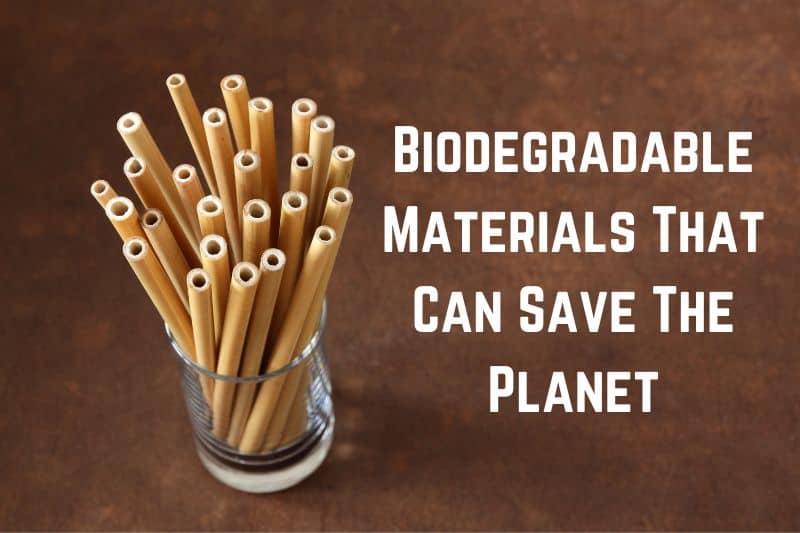For a while, saving the planet has been a difficult discussion issue. An increasing number of individuals are actively attempting to make an impact by reducing their plastic trash. Biodegradable materials degrade naturally without leaving poisons behind.
Although this is occasionally the case, biodegradable items are less harmful than non-biodegradable products. Biodegradable materials have emerged as a possible solution to pollution and environmental protection.
These materials degrade naturally over time, leaving no toxic residues and considerably lowering their environmental impact. Biodegradable goods are classified as hydro-biodegradable or oxo-biodegradable.
Biodegradable material is not damaging to the environment in manufacturing, usage, or disposal and can be easily recycled. Here are the top 21 eco-friendly alternatives that can save the planet.
Read: 17 Longest Lasting Items Found in Landfills (+Pics)
21 Biodegradable Materials That Will Save The Planet
1. Bamboo Straws
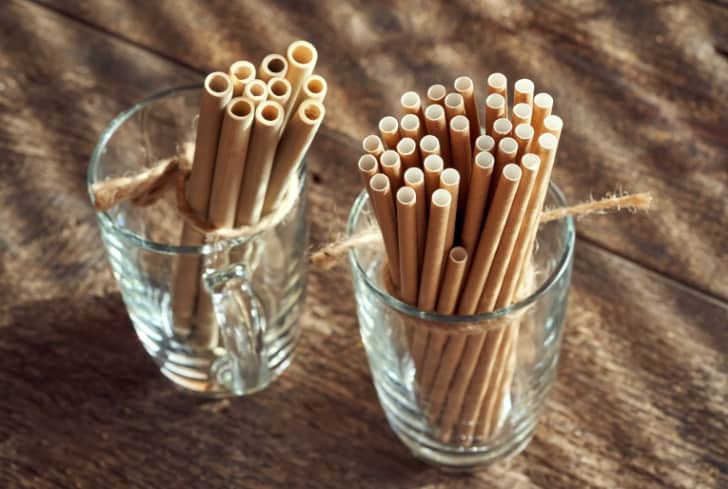
These straws are constructed entirely of biodegradable materials and are an excellent substitute for their plastic counterpart. Straws can be tossed and biodegraded. If throwing stuff away is not your thing, you may clean it out and reuse it next time, in contrast to the biodegradable paper variant.
2. Castor Beans
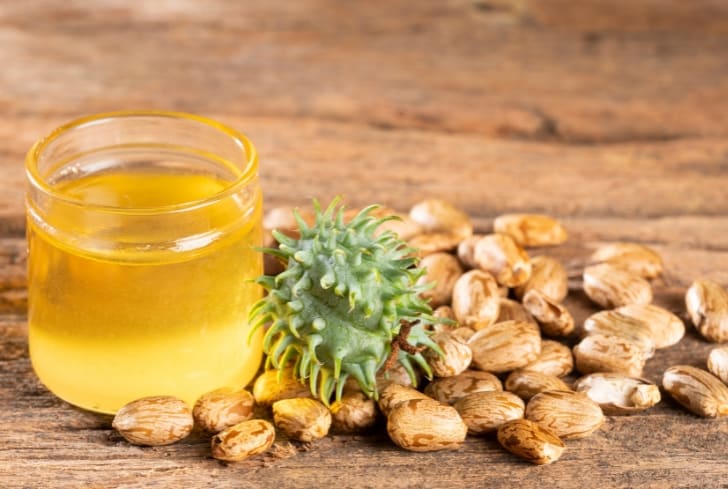
It has been demonstrated that castor bean-based plastics are more durable and lightweight than traditional petrochemicals used to manufacture vehicles. These materials can be utilized to create car bumpers, doorway trims, and even automobile panels.
The experts who made this discovery think it would increase car safety and fuel efficiency more than ten-fold! Another advantage is how the castor bean grows well on its own without pesticides, resulting in a very sustainable crop.
3. Cork
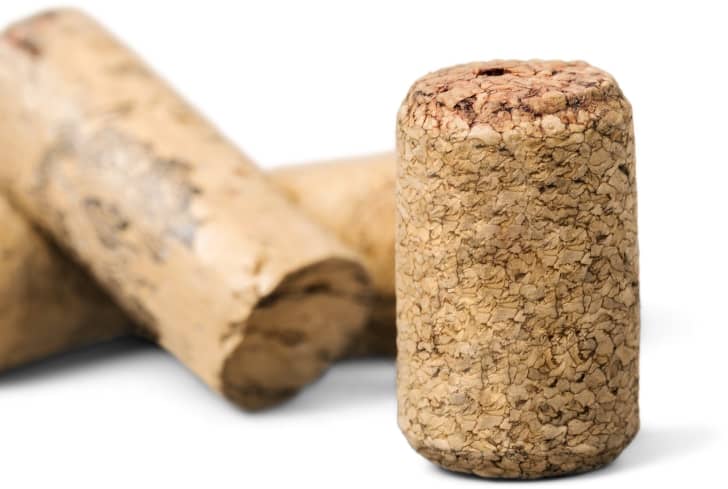
Cork has excellent biodegradability and is entirely reusable, killing two birds with a single stone. Cork production also contributes to reducing the amount of greenhouse gases generated into the atmosphere daily. Most people need to know its fire resistance properties and how it is utilized to prevent forest fires.
Cork is extremely adaptable and is utilized in a wide variety of applications! Wine bottle corks, floor coverings, purses and wallets, shoe bottoms, and sporting goods are just a few of the items that use cork. You can frequently find a cork substitute for anything that needs waterproof and malleable because it replaces leather and plastic well.
4. Mycelium
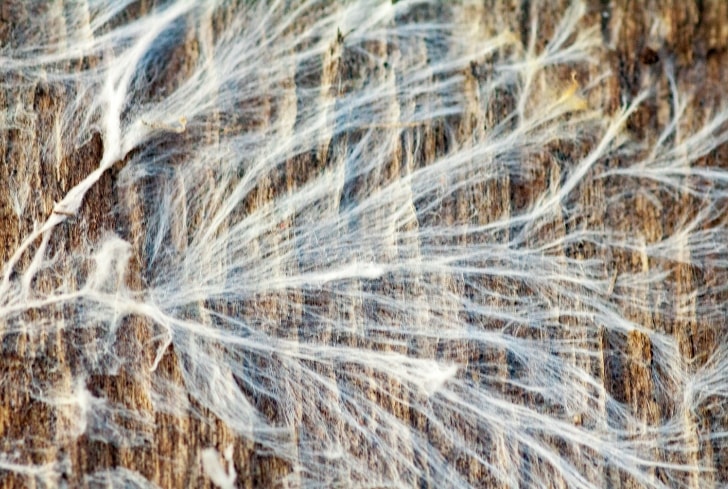
The fibrous root anatomy of mushroom fungi is known as mycelium. It is produced in a mold using agricultural byproducts and garbage to provide it structure and nutrition as a material. It quickly grows into whatever form or shape the mold has.
When completely grown, the fungi are killed by baking, and the remaining substance is extremely versatile, resilient, and even tasty! It is completely biodegradable and compostable, and it is created from waste from agriculture, making it a very environmentally responsible solution!
5. Jute
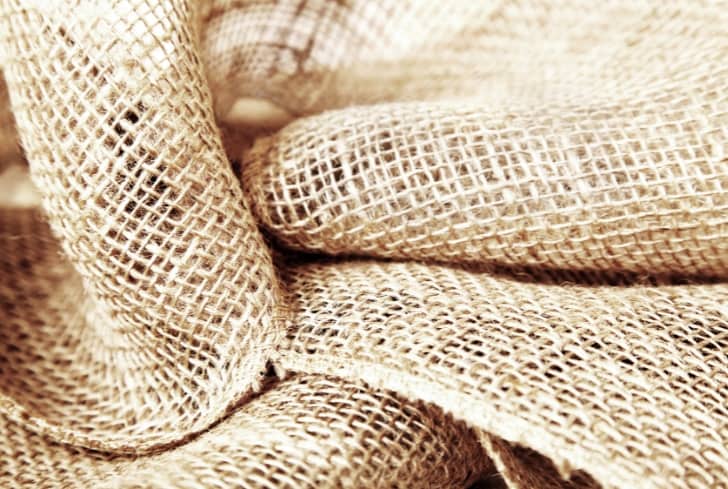
Jute is a type of natural plant fiber derived from the Jute plant. The tough fiber is best known for its application in burlap and hessian. It is among the most common and least expensive natural fibers. Jute is biodegradable, and it is possible to compost pure Jute at home. It is a sturdy plant that is inherently resistant to diseases and pests and thrives abundantly.
Jute is used in the production of yarn, clothing, and rope. The texture might be thick and gritty or fine and smooth based on how it is produced. It is frequently employed in the shape of hessian or burlap and strong ropes. It is, however, also used to manufacture gorgeous textiles such as baskets, rugs, and carpets.
6. Popcorn
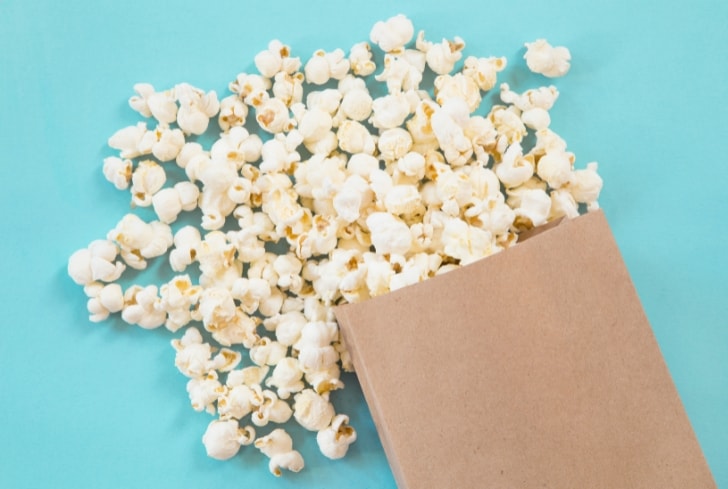
Popcorn is an excellent packaging material for fragile objects. It protects things in the same way as foam bits or polystyrene pellets do. It is, however, substantially lighter, conserving energy during transportation. Furthermore, popcorn is completely biodegradable; customers can place it in their compost bins, where it will decompose and produce compost for the crops the following year.
7. Wood

Wood is a common material that is used in practically every sector. From furniture to vessels, someone has created it using wood at some point. Untreated wood is biodegradable because it is a natural plant substance. Commercially cultivated trees are an environmentally friendly resource that helps to reduce carbon emissions into the atmosphere.
Almost every business, at every scale, uses wood. You can find some amazing items that you may not anticipate when it comes to selecting products that are created using wood as a substitute for synthetic, non-biodegradable substances, such as wooden utensils, silverware, and dishes, soap holders, as well as disposable nappies fashioned out of wood.
8. Biodegradable Pens
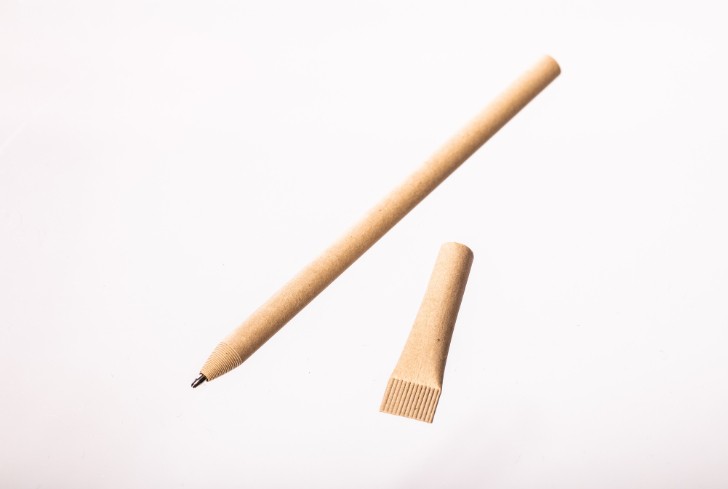
Biodegradable pens are an excellent way to demonstrate your environmental consciousness. Your pen, made of biodegradable materials, will emit no residue and, most importantly, no environmental toxins. With the possibility of a global garbage crisis caused by synthetic plastics looming, it is encouraging to see small items like this being produced.
9. Seaweed

Companies have been striving for new biodegradable containers that are both environmentally friendly and cost-effective. Seaweed plastic is manufactured entirely of plant-based ingredients, making it completely biodegradable.
10. Biodegradable Water Bottle
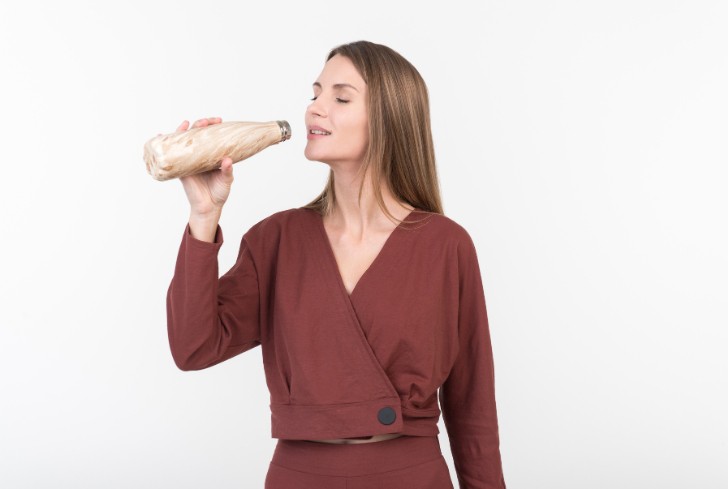
For a long time, water bottles have accumulated in the ocean. Plastic has been destroying aquatic life and contaminating our food for too long. Fortunately, a company named Clove recognized an opportunity and decided to share it. They recently introduced the world’s first biodegradable water bottle. It may be reused to make matters even better; after all, it is biodegradable.
11. Coconut Husk

Coconut scrubs have begun to catch up to petrochemical scrubs in terms of versatility and design. You can already buy bottle brushes and dish scrubbers, but now you can also get an antimicrobial, completely biodegradable, and recyclable exfoliating foot scrub pad. The sponges are gentle on sensitive skin and odorless.
These sponges can be discarded by breaking them up and discarding them in the yard, where they will degrade over time, releasing minerals and nutrients into the soil.
12. Natural Fabric
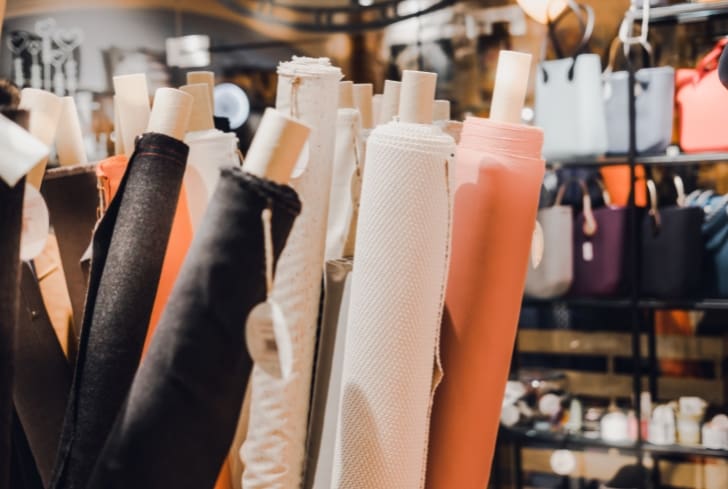
Natural fabrics degrade naturally and are not harmed by synthetic processes. One of the many benefits of these items is that they disintegrate swiftly and do not produce dangerous consequences.
13. Areca Palm Leaf
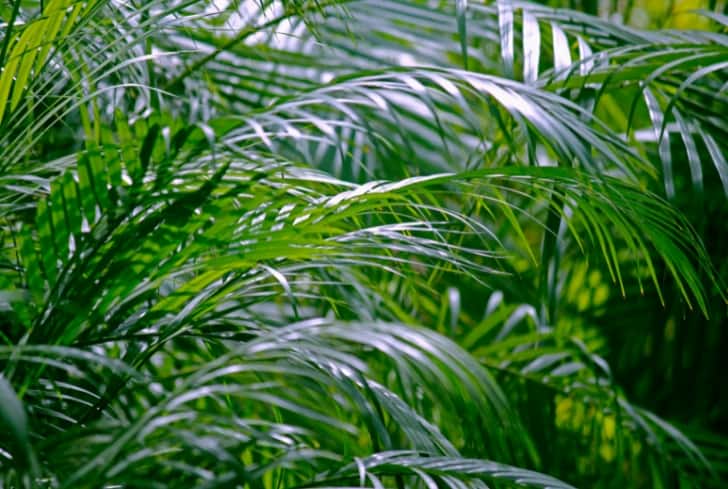
Areca Palm leaves naturally fall off the palm trees that grow in Areca Nut fields. In most cases, these leaves are collected and burned. They may be wet and compressed into shapes to create fully natural and biodegradable dishes, containers, and cups! They are produced from naturally falling leaves, and the trees are all cut down to get the leaves.
Instead of using throwaway plastic plates, bowls, and cups, palm leaves are utilized to make them. They are utilized by cafes, restaurants, and people at social gatherings and private occasions. Numerous additional products, including storage containers and home décor, are also created from areca palm leaves.
14. Bamboo
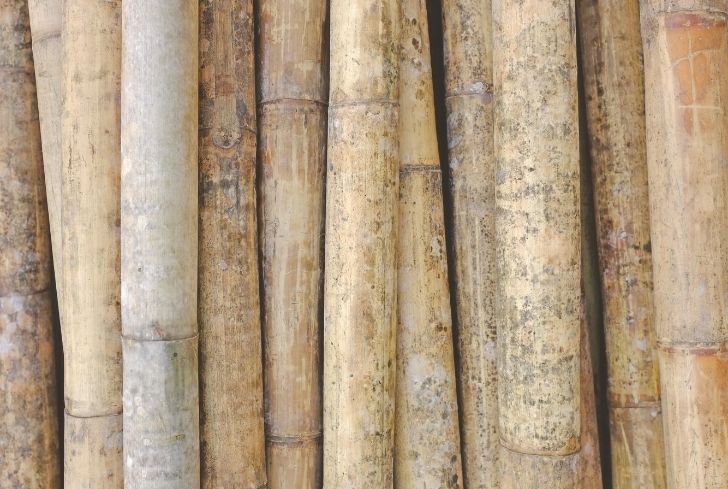
Bamboo is an entirely natural, renewable material that grows quickly and abundantly in various conditions. It is a plant that grows back after harvest and does not require replanting, making it an ideal choice for soil wellness and using less water than other wood crops. Bamboo is a terrific substitute for plastic and has been used in items from baby wipes to toothbrushes.
15. Hemp
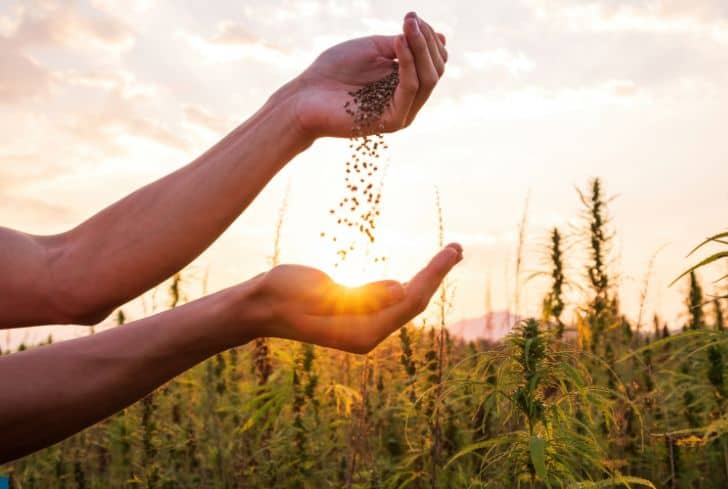
Hemp is a Cannabis plant variant produced primarily for industrial use. It is identical to bamboo because it grows quickly and is hardy in various conditions. Hemp is a 100% biodegradable and environmentally friendly crop. It requires little water to thrive and may be found anywhere.
Hemp has a wide range of industrial applications, including the production of rope, textiles, paper, and yarn for use in apparel and interior decoration. Paint, biofuel, insulation, and biodegradable plastics are products made with it. Hemp oil is now widely used in various items, including cosmetics and soap.
16. Paper
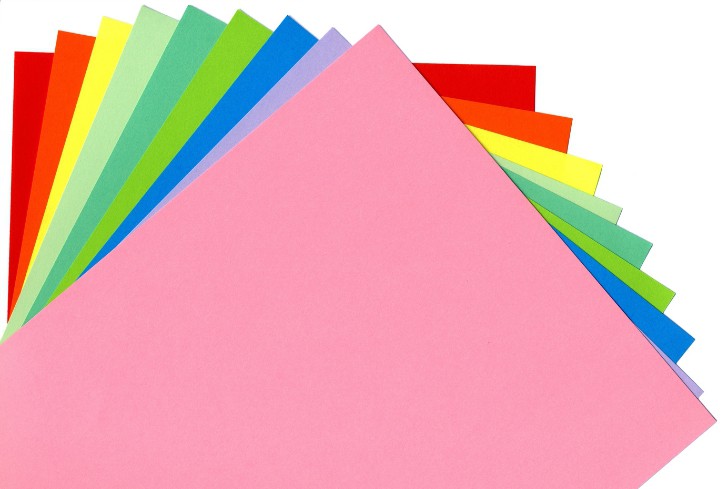
Paper is a biodegradable material. It is made from wood pulp, which is a natural and renewable resource. Microorganisms in the soil can break down paper through a process called biodegradation, which converts the cellulose fibers into simpler organic compounds that can be used as nutrients by other organisms.
When paper products are disposed of in the environment, they can biodegrade naturally over time, returning to the soil and contributing to the nutrient cycle.
However, it is important to note that some types of paper may be coated with synthetic materials or other chemicals that can slow down the biodegradation process or make it more difficult for the material to break down naturally.
17. Cardboard
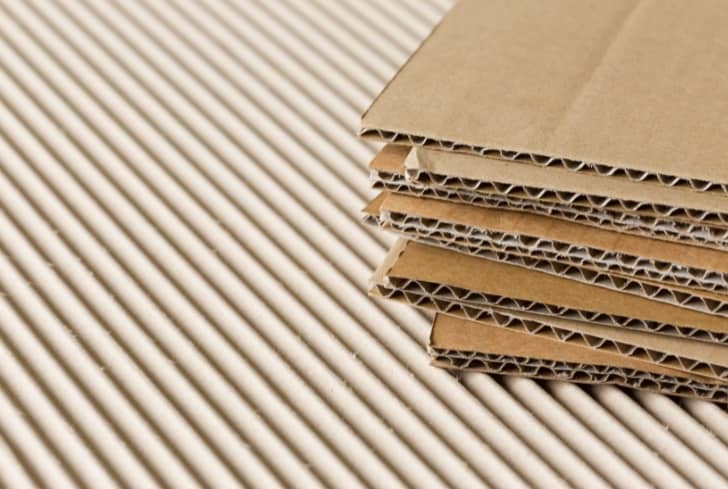
Cardboard is also a biodegradable material. It is made from wood pulp, a natural and renewable resource. Cardboard can break down naturally through decomposition, as it is composed of organic materials that microorganisms can consume in the soil.
However, it can take several months or even years for cardboard to fully decompose, depending on temperature, moisture, and microorganisms.
Additionally, some types of cardboard may be coated with synthetic materials or other chemicals that can slow down the biodegradation process or make it more difficult for the material to break down naturally.
18. Cotton
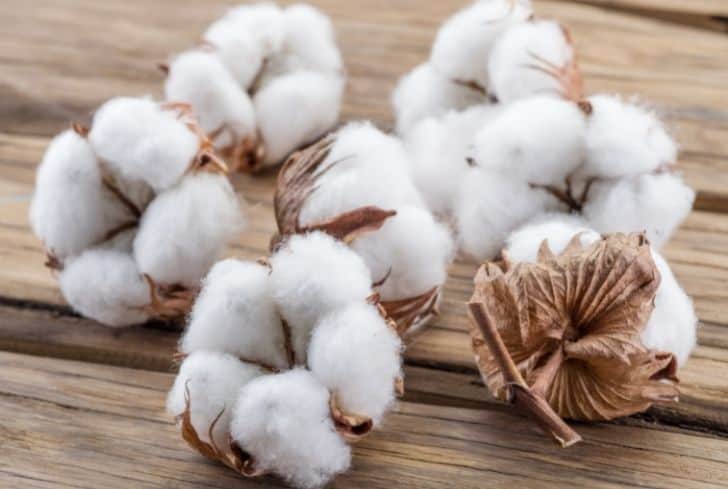
Cotton, too is a biodegradable material. It is a natural fiber derived from the cotton plant and composed of cellulose, a plant-based material that microorganisms in the soil can break down.
When cotton products are disposed of in the environment, they can biodegrade naturally over time, returning to the soil and contributing to the nutrient cycle. However, some cotton products may be treated with chemicals such as pesticides or synthetic dyes, slowing the biodegradation process or making it more difficult for the material to break down naturally.
Additionally, cotton products that are mixed with synthetic materials, such as polyester, may not biodegrade as easily or completely due to the presence of non-biodegradable materials.
19. Corn Starch
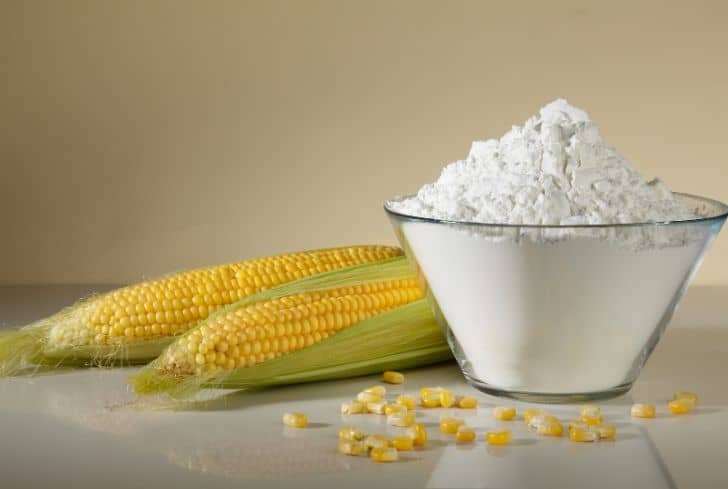
Corn starch again is a biodegradable material. It is a natural polymer derived from corn and composed of long chains of glucose molecules. Microorganisms in the soil can break down corn starch through biodegradation, which converts the starch into simpler organic compounds that can be used as nutrients by other organisms.
When corn starch products are disposed of in the environment, they can biodegrade naturally over time, returning to the soil and contributing to the nutrient cycle.
Additionally, corn starch is often used as a biodegradable alternative to plastic in the production of bioplastics, which can be broken down by microorganisms in the soil or composted under the right conditions.
20. Bagasse
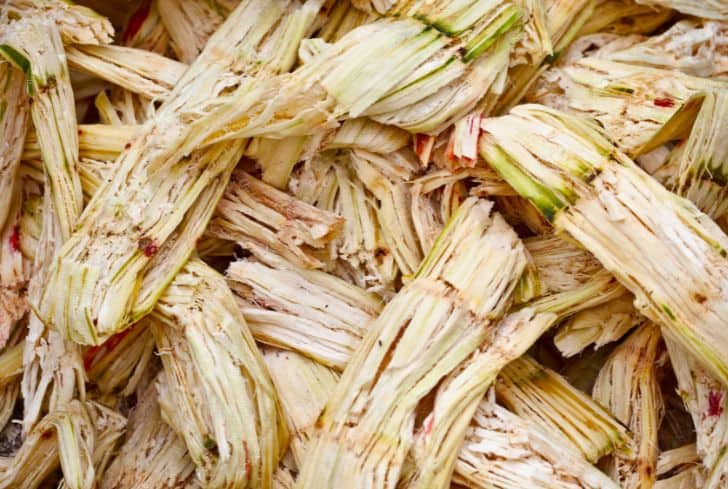
Bagasse is a natural fiber derived from sugarcane and composed of cellulose, hemicellulose, and lignin.
Microorganisms in the soil can break down Bagasse through biodegradation, which converts the material into simpler organic compounds that other organisms can use as nutrients.
When bagasse products are disposed of in the environment, they can biodegrade naturally over time, returning to the soil and contributing to the nutrient cycle. Additionally, bagasse is often used as a biodegradable alternative to plastic in food packaging and disposable tableware, which can be composted under the right conditions.
21. Banana Leaves
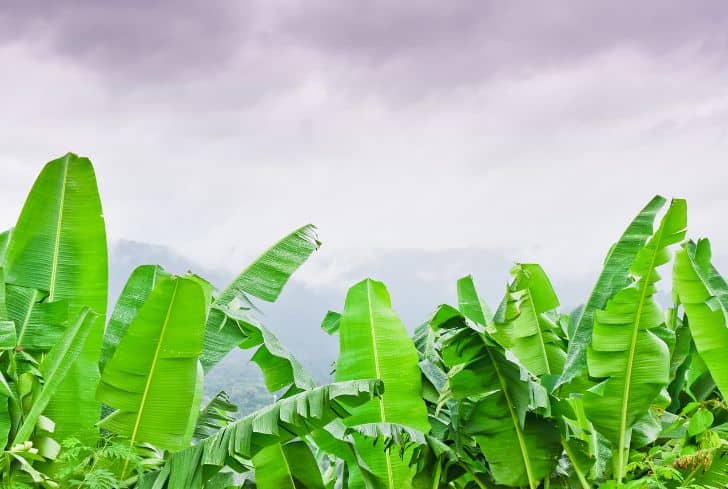
Banana leaves are also a biodegradable material. They are a natural plant-based material composed of cellulose, hemicellulose, and lignin.
Microorganisms in the soil can break down banana leaves through biodegradation, which converts the material into simpler organic compounds that other organisms can use as nutrients. When banana leaves are disposed of in the environment, they can biodegrade naturally over time, returning to the soil and contributing to the nutrient cycle.
Additionally, banana leaves are often used as a biodegradable alternative to plastic in food packaging and disposable tableware, which can be composted under the right conditions.
Conclusion
Biodegradable products provide us with better options for saving our world. There are countless fantastic products created entirely of biodegradable materials that are environmentally beneficial and long-lasting. Because most objects will take millions of years to degrade, consider using renewable-based materials.
